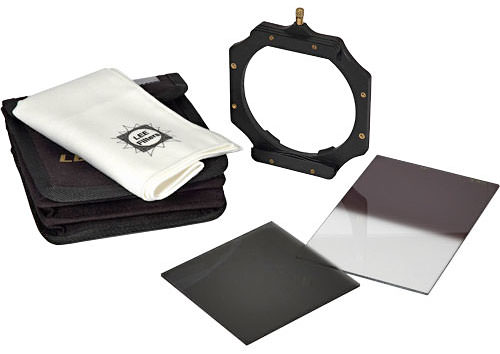شرح مرشحات عدسة الكاميرا
Camera Lens Filters Explained
شرح مرشحات عدسة الكاميرا

المرشحات في التصوير الفوتوغرافي - صفائح من الزجاج أو الراتنج متصلة بعدسة الكاميرا - يمكن أن تخدم أغراضًا مختلفة للمصورين. يمكن أن تكون لا غنى عنها لالتقاط المناظر الطبيعية في ظروف الإضاءة الصعبة للغاية، ويمكنها تحسين الألوان وتقليل الانعكاسات، ويمكنها ببساطة حماية العدسات. تستخدم المرشحات على نطاق واسع في التصوير الفوتوغرافي والسينمائي. يستخدم بعض المصورين المرشحات فقط في حالات نادرة، بينما يعتمد البعض الآخر على المرشحات في عملهم اليومي.

إذًا، ما الذي يجعل المرشحات مفيدة جدًا؟ يعتمد الأمر في الواقع على نوع التصوير الفوتوغرافي الذي تقوم به.
على سبيل المثال، يعتمد مصورو المناظر الطبيعية بشكل كبير على المرشحات المختلفة، بينما نادرًا ما يستخدمها مصورو الشوارع والصور الشخصية. نظرًا لأن التصوير الرقمي يدور حول جودة الضوء وكثافته، فغالبًا ما تكون مرشحات العدسة ضرورية لتعديل الضوء قبل دخوله إلى العدسة.
يعتقد العديد من المصورين أن بعض الأدوات المدمجة في Lightroom وPhotoshop يمكنها محاكاة سلوك المرشح، مما يجعل المرشحات زائدة عن الحاجة في العصر الرقمي. كما سأوضح أدناه، في الواقع، لا يمكن أبدًا محاكاة بعض المرشحات في البرامج وبعضها يساعد في الحصول على نتائج أفضل أثناء المعالجة اللاحقة. في هذه المقالة، سأتحدث عن الأنواع المختلفة لمرشحات العدسات المتاحة، وماذا تفعل، ومتى وكيف تستخدمها.
(كملاحظة جانبية، إذا كنت ترغب في التعرف على المرشحات بتنسيق فيديو، فقد أنشأنا البرنامج التعليمي الأكثر شمولاً حول المرشحات في أي مكان على Youtube. يمكنك مشاهدته أدناه.)
(نعتذر لعدم توفر الفديو باللغة العربية)
https://www.youtube.com/watch?v=cpGo8J-dIgI

Filters in photography – sheets of glass or resin attach to your camera lens – can serve different purposes for photographers. They can be indispensable for capturing scenery in extremely difficult lighting conditions, they can enhance colors and reduce reflections, and they can simply protect lenses. Filters are widely used in photography and cinematography. Some photographers only use filters in rare situations, while others rely on filters for their everyday work.

So, what makes filters so useful? It actually depends on the type of photography you do.
For example, landscape photographers heavily rely on various filters, while street and portrait photographers rarely get to use them. Since digital photography is all about the quality and intensity of light, lens filters are often necessary to modify the light before it enters the lens.
Many photographers think that some of the built-in tools in Lightroom and Photoshop can simulate filter behavior, making filters redundant in the digital age. As I will demonstrate below, some filters, in fact, can never be simulated in software and some actually help in getting even better results during post-processing. In this article, I will talk about the different types of lens filters available, what they do, when and how to use them.
(As a side note, if you’d like to learn about filters in a video format, we’ve created the most comprehensive tutorial about filters anywhere on Youtube.You can watch it below.)
https://www.youtube.com/watch?v=cpGo8J-dIgI
Camera Lens Filters Explained
شرح مرشحات عدسة الكاميرا

المرشحات في التصوير الفوتوغرافي - صفائح من الزجاج أو الراتنج متصلة بعدسة الكاميرا - يمكن أن تخدم أغراضًا مختلفة للمصورين. يمكن أن تكون لا غنى عنها لالتقاط المناظر الطبيعية في ظروف الإضاءة الصعبة للغاية، ويمكنها تحسين الألوان وتقليل الانعكاسات، ويمكنها ببساطة حماية العدسات. تستخدم المرشحات على نطاق واسع في التصوير الفوتوغرافي والسينمائي. يستخدم بعض المصورين المرشحات فقط في حالات نادرة، بينما يعتمد البعض الآخر على المرشحات في عملهم اليومي.

إذًا، ما الذي يجعل المرشحات مفيدة جدًا؟ يعتمد الأمر في الواقع على نوع التصوير الفوتوغرافي الذي تقوم به.
على سبيل المثال، يعتمد مصورو المناظر الطبيعية بشكل كبير على المرشحات المختلفة، بينما نادرًا ما يستخدمها مصورو الشوارع والصور الشخصية. نظرًا لأن التصوير الرقمي يدور حول جودة الضوء وكثافته، فغالبًا ما تكون مرشحات العدسة ضرورية لتعديل الضوء قبل دخوله إلى العدسة.
يعتقد العديد من المصورين أن بعض الأدوات المدمجة في Lightroom وPhotoshop يمكنها محاكاة سلوك المرشح، مما يجعل المرشحات زائدة عن الحاجة في العصر الرقمي. كما سأوضح أدناه، في الواقع، لا يمكن أبدًا محاكاة بعض المرشحات في البرامج وبعضها يساعد في الحصول على نتائج أفضل أثناء المعالجة اللاحقة. في هذه المقالة، سأتحدث عن الأنواع المختلفة لمرشحات العدسات المتاحة، وماذا تفعل، ومتى وكيف تستخدمها.
(كملاحظة جانبية، إذا كنت ترغب في التعرف على المرشحات بتنسيق فيديو، فقد أنشأنا البرنامج التعليمي الأكثر شمولاً حول المرشحات في أي مكان على Youtube. يمكنك مشاهدته أدناه.)
(نعتذر لعدم توفر الفديو باللغة العربية)
https://www.youtube.com/watch?v=cpGo8J-dIgI

Filters in photography – sheets of glass or resin attach to your camera lens – can serve different purposes for photographers. They can be indispensable for capturing scenery in extremely difficult lighting conditions, they can enhance colors and reduce reflections, and they can simply protect lenses. Filters are widely used in photography and cinematography. Some photographers only use filters in rare situations, while others rely on filters for their everyday work.

So, what makes filters so useful? It actually depends on the type of photography you do.
For example, landscape photographers heavily rely on various filters, while street and portrait photographers rarely get to use them. Since digital photography is all about the quality and intensity of light, lens filters are often necessary to modify the light before it enters the lens.
Many photographers think that some of the built-in tools in Lightroom and Photoshop can simulate filter behavior, making filters redundant in the digital age. As I will demonstrate below, some filters, in fact, can never be simulated in software and some actually help in getting even better results during post-processing. In this article, I will talk about the different types of lens filters available, what they do, when and how to use them.
(As a side note, if you’d like to learn about filters in a video format, we’ve created the most comprehensive tutorial about filters anywhere on Youtube.You can watch it below.)
https://www.youtube.com/watch?v=cpGo8J-dIgI

تعليق